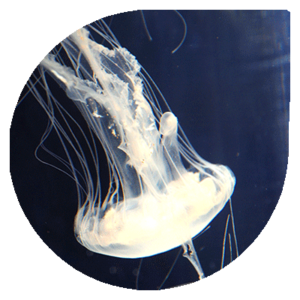The South, West, and Rhode are special rivers with rich Native American and colonial history while retaining a strong agricultural and maritime heritage. Today they are primarily treasured for their recreational aspects as a great place to boat, kayak, fish, swim, birdwatch and hike.
Environmental Issues:
Stormwater from roads, roofs, and other hard surfaces is the largest source of pollution for our rivers. The stormwater rushes into streams, ripping down huge chunks of stream bank and sending tons of sediment every year into the river.
- Sediment (Dirt): Every major rain event creates large sediment plumes flowing out from the creeks into the tidal main stems of our rivers. These sediment plumes suffocate fish spawning grounds and block sunlight to the underwater grasses that are a vital source of dissolved oxygen and habitat. The soil in the geological band in central Anne Arundel also have nutrients bound to the soil, further contributing to algae blooms.
- Excess Nutrients: Lawn fertilizer, agricultural run-off, and leaks from sewage pipes and septic systems lead to excess nutrients causing harmful algae blooms yearly. In early spring and late summer, there is consistently not enough dissolved oxygen in the bottom depths of the creeks and rivers to support aquatic life.
- Chemicals: Pesticides, oil spills, and gasoline/diesel leaks from boats are also harmful to aquatic life. There are also illegal tire and trash dumps leaching harmful chemicals into our rivers. Maryland, at the consistent urging of the Federation, has cleaned up one of the largest tire dumps in the state. The dump is located in Crownsville, MD, along Bacon Ridge Stream, which drains to the South River.
Jellyfish Line

Our Rivers normally straddle “the jellyfish line”, the line across the Chesapeake Bay where the water is too fresh to support jellyfish, so people can swim without being stung. The line location depends on the rainfall for that year, so sometimes the jellyfish line is as far north as Baltimore and sometimes it is as far south as St. Mary’s. Jellyfish usually arrive in our rivers mid-summer, but some years not at all.
Natural Context
The South, West, and Rhode Rivers are brackish water rivers, meaning they are a mix of fresh water (coming from streams, rainwater, and underground springs) and ocean saltwater flowing up the Chesapeake Bay. These brackish rivers, also known as estuaries, play a vital role in the ecosystem, because they are so productive. In other words, estuaries support an abundance of wildlife.
Due to the changing salinity of the water and the changing height of the water due to tides, our rivers are a tough place to live and most of the wildlife have special adaptations to deal with these harsh conditions. However, if you can survive here, like a crab, oyster, or barnacle then your population numbers explode, since there is plenty of food and low levels of competition. It is why the Chesapeake supports so many commercial fisheries. Our rivers have relatively low biodiversity, but high abundance of aquatic life.
This principle applies to plants in our rivers as well. Thus, our rivers historically supported large areas of marsh and underwater grass, which are a vital habitat. Historically, The South, West, and Rhode were important nurseries, where the young of many different species could find protection from larger predators. Unfortunately, development and the resulting stormwater runoff has led to vastly reduced amounts of marsh and underwater grasses in our rivers. They no longer provide the nurseries for wildlife they did in the 1950’s.
Learn About Our Rivers: